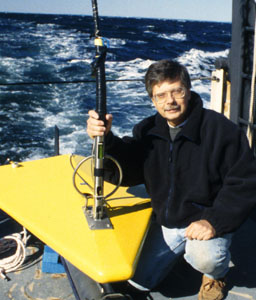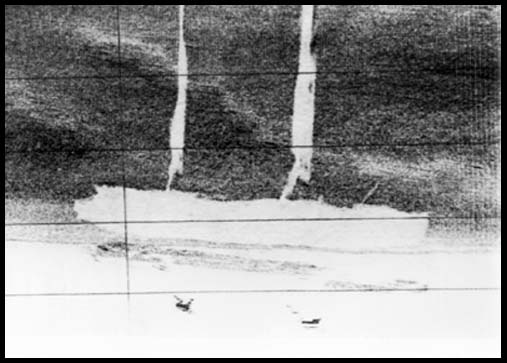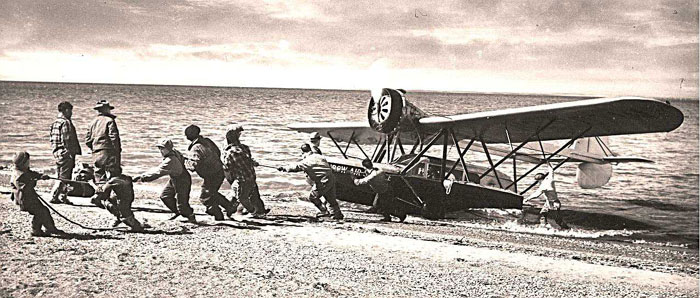GARRY KOZAK
 Garry Kozak
grew up
in the Great Lakes and began diving in 1962. Shipwrecks became a major
fascination and the challenge to dive wrecks that had not been
previously
located became his main diving interest. In the late 1960's , he left
the
Great Lakes to pursue a career in the field of commercial diving.
This work took him off the coast of Newfoundland providing diving
support
on oil drilling rigs, to the Gulf of Mexico providing diving support to
the offshore oil industry, and salvage operations in the Great Lakes.
Garry Kozak
grew up
in the Great Lakes and began diving in 1962. Shipwrecks became a major
fascination and the challenge to dive wrecks that had not been
previously
located became his main diving interest. In the late 1960's , he left
the
Great Lakes to pursue a career in the field of commercial diving.
This work took him off the coast of Newfoundland providing diving
support
on oil drilling rigs, to the Gulf of Mexico providing diving support to
the offshore oil industry, and salvage operations in the Great Lakes.
In 1975, he returned to the Great Lakes and formed a company,
Innerseas Inc., whose purpose was to locate and salvage shipwrecks and
cargoes in the Great Lakes. The first ship selected was a ghost
ship,
the Dean Richmond. The Dean was a steamer that disappeared on the
waters
of Lake Erie in October of 1893, carrying a cargo of lead and zinc
ingots.
On July 13, 1983, the Dean Richmond was found, solving a 90 year old
mystery.
For the past 24 years, Garry has been employed by Klein
Associates of Salem, N.H., the technology leader in Side Scan
Sonar systems. He is a recognized expert in undersea search
operations
and travels the world providing consulting and training expertise to
Navies
and companies who have a critical underwater search need. His
work
has taken him to the Canadian Arctic with Dr. Joe MacInnis to locate
the
H.M.S. Breadalbane, off the coast of England with author Clive Cussler
in search of John Paul Jones' vessel, the Bon Homme Richard, and
on countless other treasure and historic shipwreck searches.
The Discovery of the HMS Breadalbane,
Lost In The Arctic 1853

Sir John Franklin in 1845, sailed for the Canadian Arctic in search
of the Northwest Passage. Franklin and his two ships the Erebus
and
Terror disappeared, and the longest search ever in naval history,
spanning
14 years, began. The HMS Breadalbane, a three masted barque, was one of
the support ships participating in the search for the Franklin
expedition.
On
August 21, 1853, the Breadalbane was trapped in a death grip
by ice, crushing and sinking her. The Breadalbane laid undisturbed in
it's
frigid Arctic grave for 126 years. In 1976 the search for the
resting
place of the Breadalbane began under the direction of Dr. Joe
MacInnis
and Emory Kristof of National Geographic Magazine. This
presentation
chronicles the search, disappointments and finally, the discovery of
the
world's most northern shipwreck.
Sikorsky's Amphibian S-39, An Alaskan Challenge
 Igor Sikorsky is best known for his development of the
helicopter.
Sikorsky however, was a very accomplished fixed wing aircraft
designer
long before his name became synonymous with helicopters. Sikorsky
designed
and built some of aviation's great "Flying Boats" such as the
S-42
used by Pan Am for its transoceanic record setting "Clipper"
fleet.
Sikorsky was a visionary, and in 1930 designed a smaller amphibian
plane
called the S-39 . This was to be a small single engine plane for
the individual business executive. It was the "Lear Jet" of the
day.
Sikorsky's vision however was ahead of it's time, so only 23 of these
aircraft
were ever built and sold. With the passing years, all were destroyed
except
for 2. One, is a non flying rebuild, located in the Hartford CT
air
museum. The second was lost in a remote lake in Alaska.
This
presentation describes the search, discovery, and attempts to date at
recovering
this rare piece of aviation history. This project is still a work in
progress.
A new attempt to recover the aircraft will be launched during March,
2002.
It will be staged on the winter ice and will be a major challenge due
to
it's remote location. If successful, the plane will be restored
to
flying condition to once again grace the skies.
Igor Sikorsky is best known for his development of the
helicopter.
Sikorsky however, was a very accomplished fixed wing aircraft
designer
long before his name became synonymous with helicopters. Sikorsky
designed
and built some of aviation's great "Flying Boats" such as the
S-42
used by Pan Am for its transoceanic record setting "Clipper"
fleet.
Sikorsky was a visionary, and in 1930 designed a smaller amphibian
plane
called the S-39 . This was to be a small single engine plane for
the individual business executive. It was the "Lear Jet" of the
day.
Sikorsky's vision however was ahead of it's time, so only 23 of these
aircraft
were ever built and sold. With the passing years, all were destroyed
except
for 2. One, is a non flying rebuild, located in the Hartford CT
air
museum. The second was lost in a remote lake in Alaska.
This
presentation describes the search, discovery, and attempts to date at
recovering
this rare piece of aviation history. This project is still a work in
progress.
A new attempt to recover the aircraft will be launched during March,
2002.
It will be staged on the winter ice and will be a major challenge due
to
it's remote location. If successful, the plane will be restored
to
flying condition to once again grace the skies.
Return to NDA
Homepage

 Garry Kozak
grew up
in the Great Lakes and began diving in 1962. Shipwrecks became a major
fascination and the challenge to dive wrecks that had not been
previously
located became his main diving interest. In the late 1960's , he left
the
Great Lakes to pursue a career in the field of commercial diving.
This work took him off the coast of Newfoundland providing diving
support
on oil drilling rigs, to the Gulf of Mexico providing diving support to
the offshore oil industry, and salvage operations in the Great Lakes.
Garry Kozak
grew up
in the Great Lakes and began diving in 1962. Shipwrecks became a major
fascination and the challenge to dive wrecks that had not been
previously
located became his main diving interest. In the late 1960's , he left
the
Great Lakes to pursue a career in the field of commercial diving.
This work took him off the coast of Newfoundland providing diving
support
on oil drilling rigs, to the Gulf of Mexico providing diving support to
the offshore oil industry, and salvage operations in the Great Lakes.

